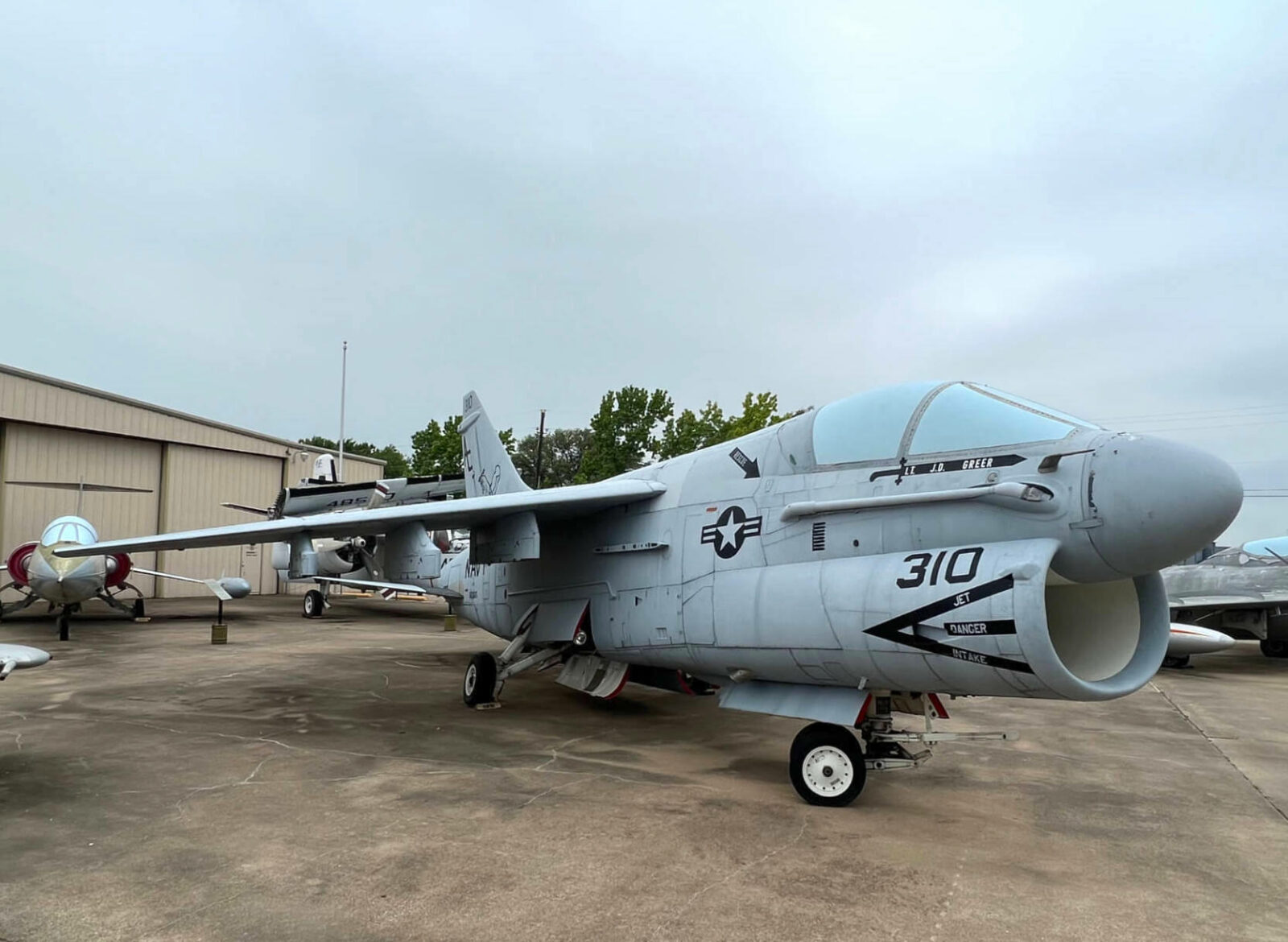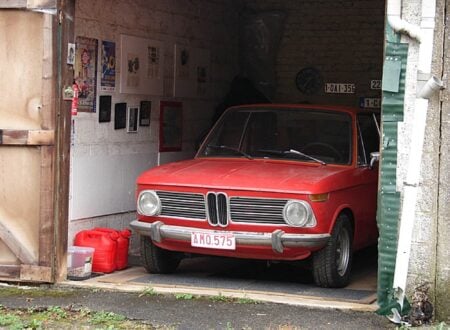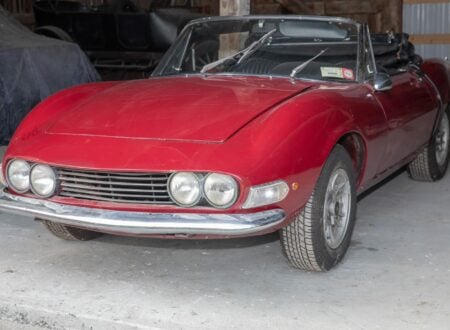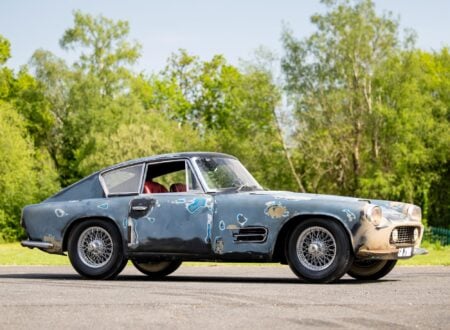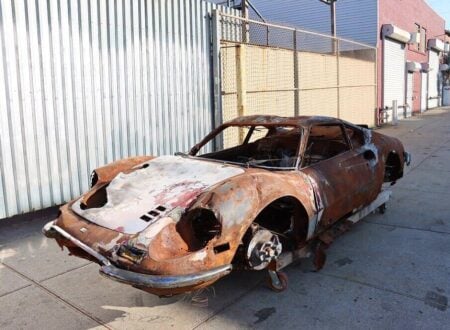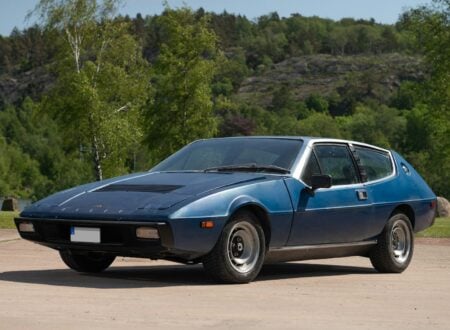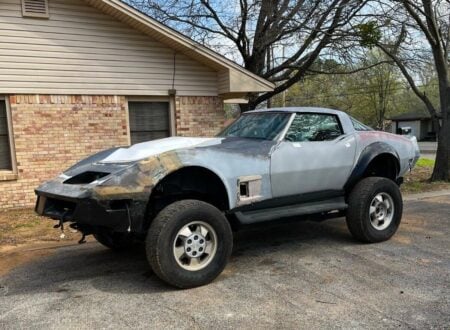This Vought A-7 Corsair II was first delivered to the US Navy in the 1960s, it would then serve with Attack Squadron 46 while deployed aboard USS John F. Kennedy during Operation Desert Shield/Desert Storm 1990-91.
It’s now been restored back to static display condition and finished the colors it wore in Attack Squadron 46. It’s being offered for sale out of Addison, Texas for $50,000 USD and it’ll be up to the new owner if they keep it as is, or have it restored to flying condition.
Fast Facts – The Vought A-7 Corsair II
- The A-7 was developed in the early 1960s as a replacement for the Douglas A-4 Skyhawk. It was intended to provide the Navy with a more effective light attack aircraft, with longer range and payload capabilities. The A-7 was derived from the Vought F-8 Crusader, a previous successful naval fighter aircraft.
- The A-7 was powered by a single Pratt & Whitney TF30 turbofan engine. This gave the aircraft a top speed of around 690 mph (1,110 km/h) and a range of approximately 2,280 miles (3,670 km). The engine allowed the aircraft to carry a significant weapons payload while maintaining reasonable agility for close air support missions.
- One of the key features of the A-7 was its integrated avionics suite. This included a digital navigation system, a heads-up display (HUD), and a multi-mode radar. These innovations greatly improved the aircraft’s accuracy, making it one of the first planes to have precision-guided munition capabilities.
- The A-7 Corsair II saw extensive combat during the Vietnam War where it gained a reputation for its accuracy and ability to deliver ordnance effectively. It also served in various other conflicts, including the 1986 bombing of Libya and the Gulf War. The aircraft was retired from the U.S. Navy in 1991 but continued to serve in the Air National Guard until 1993.
- The Vought A-7 Corsair II you see in this article has been restored to static condition. It originally served with Attack Squadron 46 (VA-46) while deployed aboard USS John F. Kennedy during Operation Desert Shield/Desert Storm 1990-91. It’s now for sale for $50,000 USD.
The Vought A-7 Corsair II: “SLUF”
Development of the A-7 Corsair II began with the United States Navy’s call for a new aircraft to replace the aging A-4 Skyhawk. The new aircraft was intended to deliver a higher payload over greater distances, possess advanced avionics, and, importantly, be more efficient in terms of operational costs.
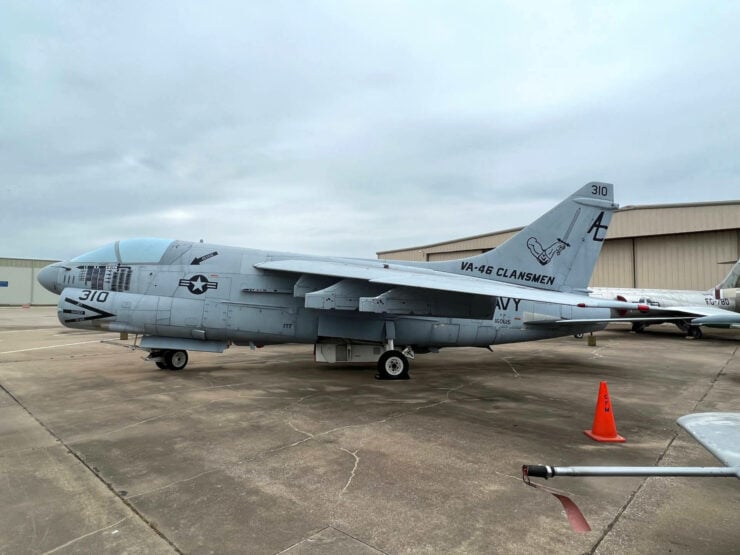

Vought’s response was a design that drew much of its inspiration from the earlier F-8 Crusader. While the F-8 was designed primarily as an air superiority fighter, the A-7 was tailored to be a subsonic light attack aircraft. Its design incorporated a shorter, redesigned wing, a more streamlined fuselage, and the latest available avionics systems.
One of the defining features of the A-7 was its carefully developed, state-of-the-art avionics suite. The Corsair II was one of the early adopters of a Head-Up Display (HUD), which projected vital information onto a transparent screen in the pilot’s forward view.
These HUD systems allowed pilots to remain heads-up during critical flight operations, improving their situational awareness. Systems like those used on the A-7 Corsair II would become the de facto standard.
The A-7 was also fitted with an advanced digital navigation system – this system reduced the guesswork and complexities associated with older navigational methods, ensuring more accurate target engagement and higher rates of mission success, importantly it also markedly reduced instances of collateral damage.
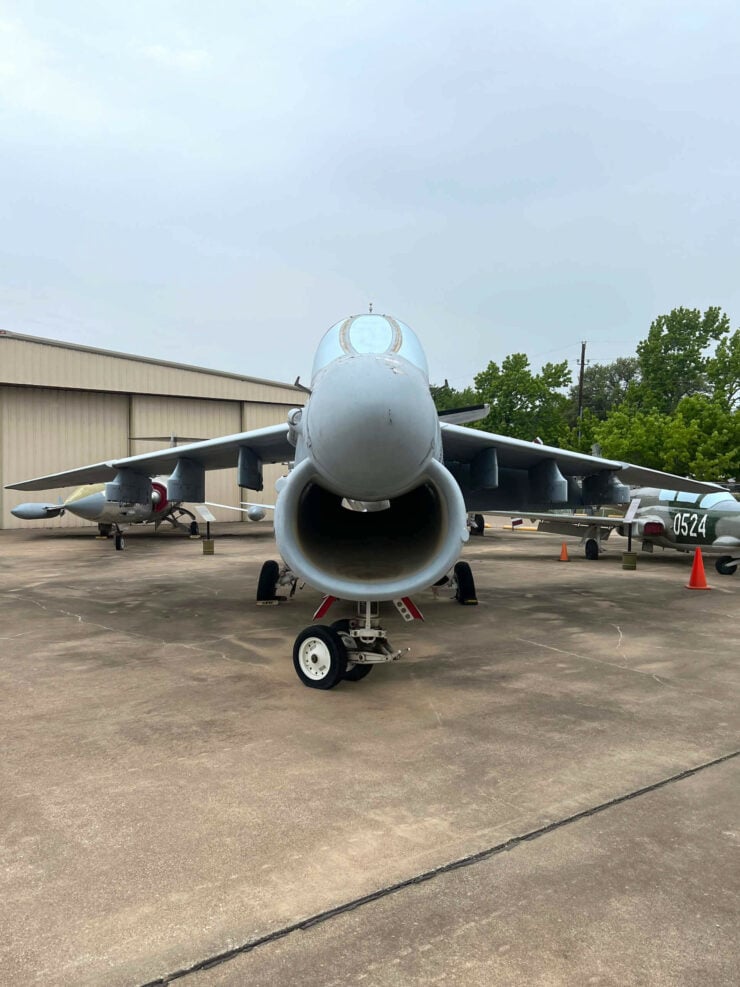

The aircraft first saw combat during the Vietnam War. In this theater, the A-7’s capabilities were on full display, its ability to carry a varied payload, combined with its advanced avionics, made it a force to be reckoned with, delivering precision strikes against enemy positions over countless individual sorties.
Following Vietnam, the A-7 continued to be a mainstay of the US Navy and Air Force inventories, playing roles in various conflicts and operations around the globe including the Invasion of Grenada, Operation El Dorado Canyon, and the Gulf War.
By the 1990s, advancements in aviation technology meant that newer aircraft, such as the F/A-18 Hornet, began to replace the A-7 in frontline service. However, even as it phased out of active duty, the Corsair II’s influence could be felt.
Many of the design principles, avionics systems, and operational doctrines associated with the A-7 would become standard in subsequent aircraft designs. Its emphasis on pilot situational awareness, precision strike capability, and operational efficiency set the bar for the generations of aircraft that followed.
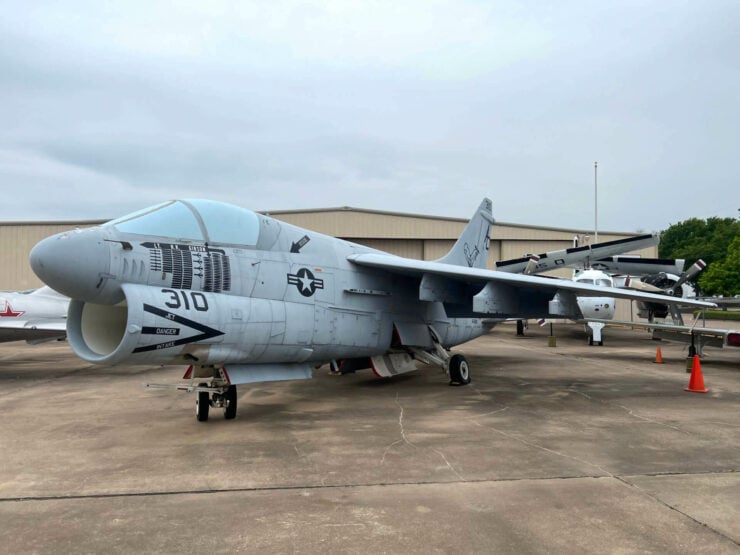

The Vought A-7 Corsair II was popular with those who flew it, though as with many military jets it attracted its own assortment of nicknames, the most prominent of which was “SLUF,” an acronym for “Short, Little, Ugly, F#$K.” Though it may sound derogatory, it was used in an entirely affectionate way by the aircraft’s pilots and ground crews.
The Vought A-7E Corsair II Shown Here
The aircraft you see here is the A-7E variant of the Corsair II. It’s one of the hundreds that served with the US Navy from the 1960s well onto the 1990s, seeing combat in a number of conflicts concluding with the Gulf War.
Above Video: This is an original US Navy film that was produced to educate pilots about the flight characteristics of the Vought A-7 Corsair II, and to prepare them for landing the aircraft on a carrier, as well as takeoff.
As detailed in the introduction, this aircraft served with Attack Squadron 46 while deployed aboard USS John F. Kennedy during Operation Desert Shield/Desert Storm 1990-91. It has now been restored to static condition in its Attack Squadron 46 colors, and it’s being offered for sale out of Addison, Texas.
If you’d like to read more about this aircraft or enquire about buying it you can find the listing here on Platinum Fighter Sales. It’s being offered for $50,000 USD and it’ll be up to the new owner whether they want to keep it as is, or have it restored to full flying condition.
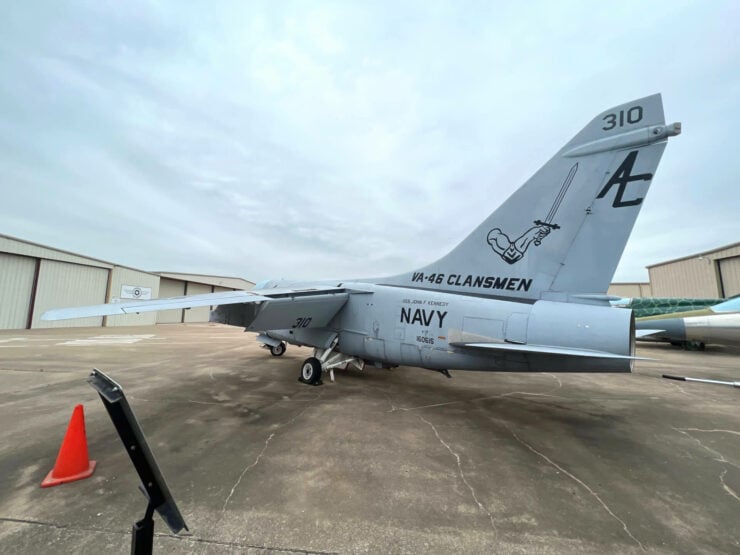
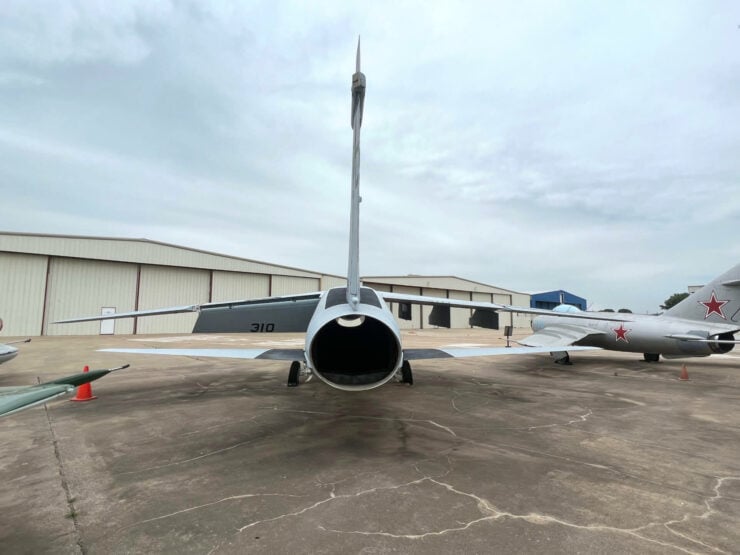
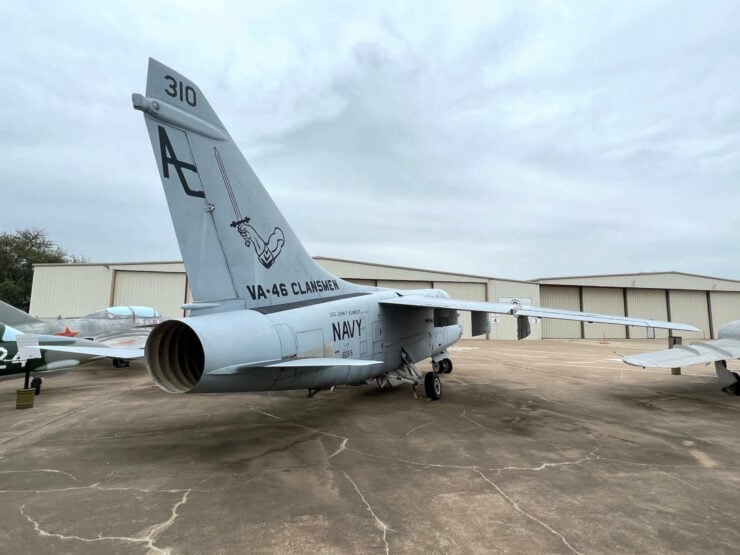
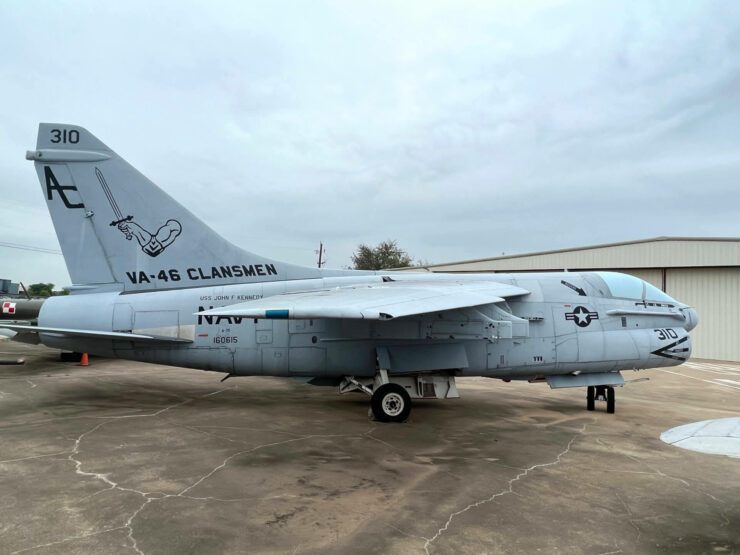
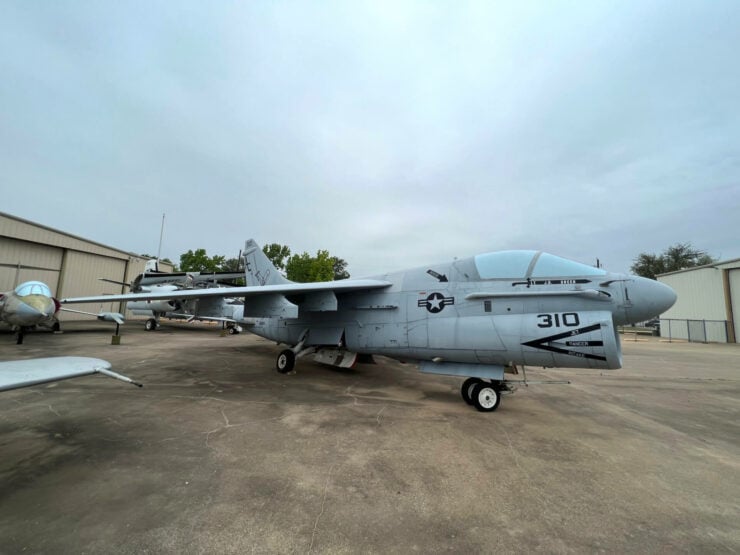
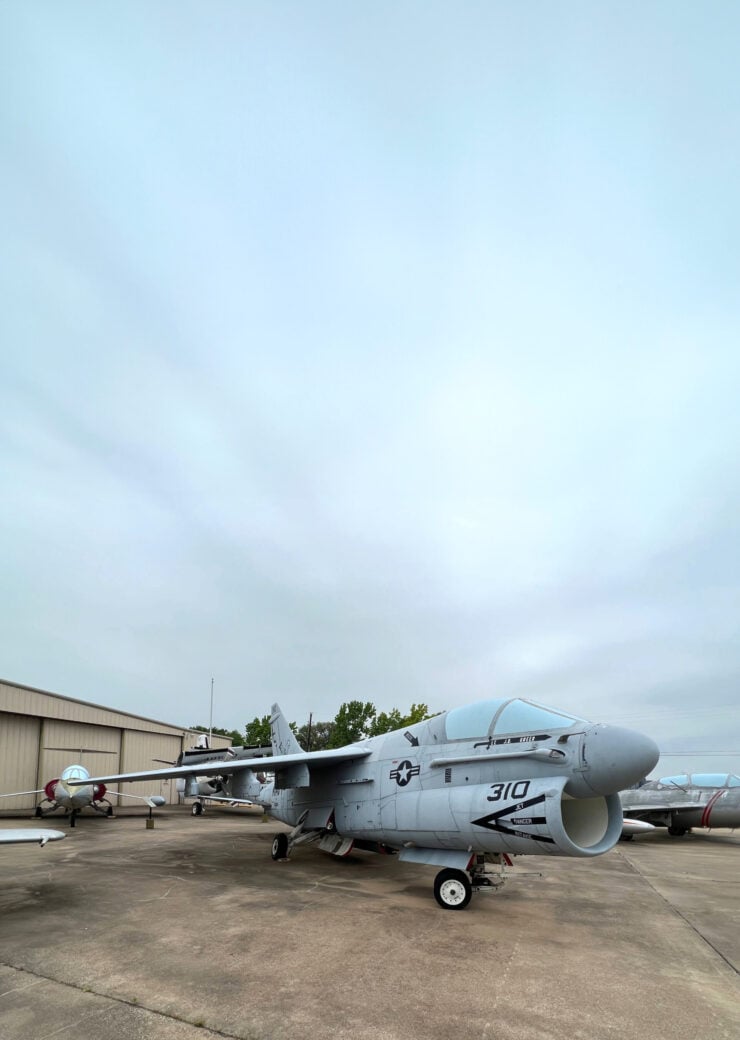
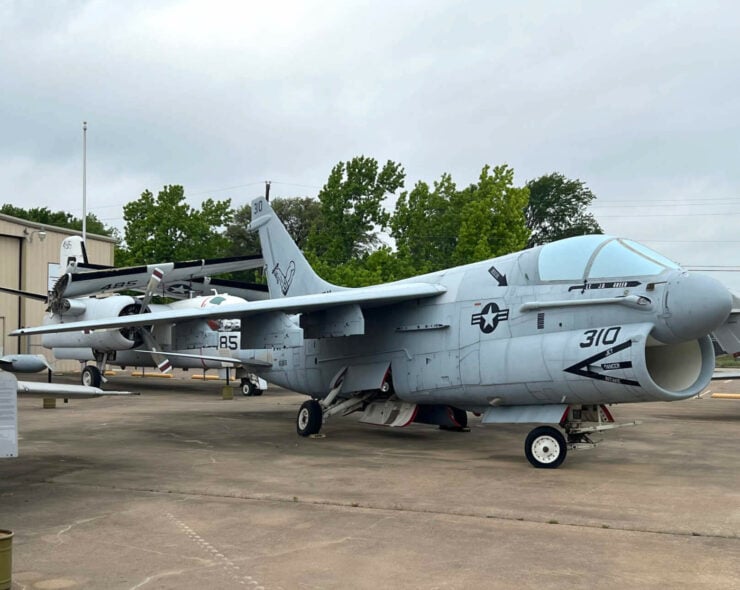
Images courtesy of Platinum Fighter Sales

Articles that Ben has written have been covered on CNN, Popular Mechanics, Smithsonian Magazine, Road & Track Magazine, the official Pinterest blog, the official eBay Motors blog, BuzzFeed, Autoweek Magazine, Wired Magazine, Autoblog, Gear Patrol, Jalopnik, The Verge, and many more.
Silodrome was founded by Ben back in 2010, in the years since the site has grown to become a world leader in the alternative and vintage motoring sector, with well over a million monthly readers from around the world and many hundreds of thousands of followers on social media.

